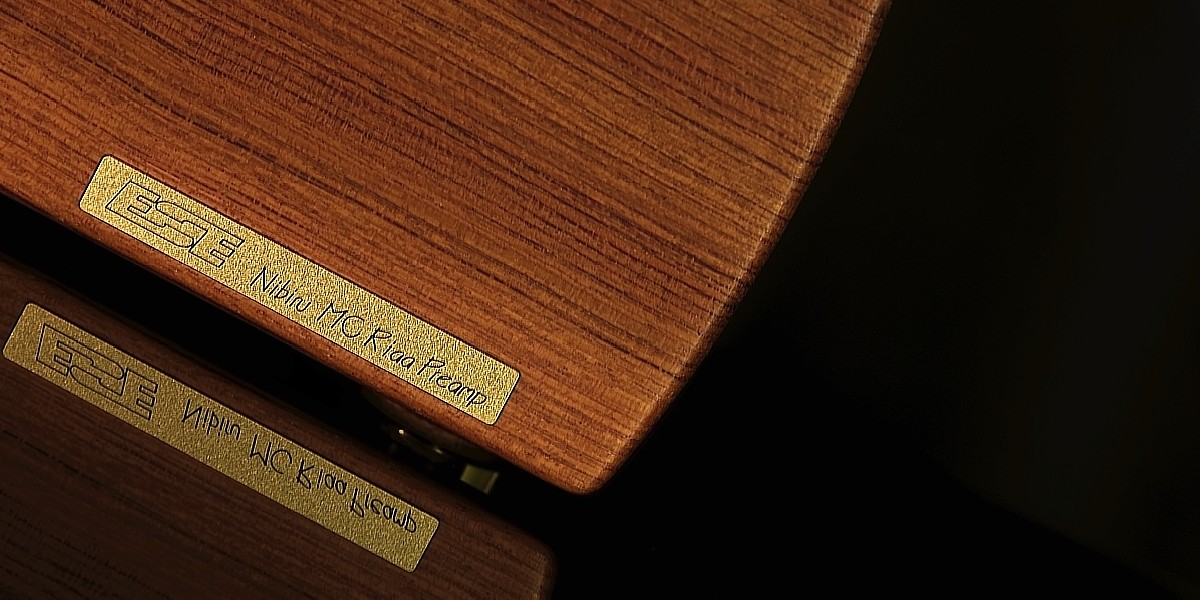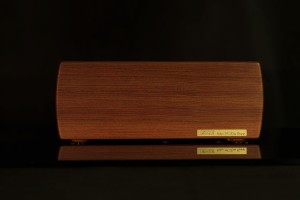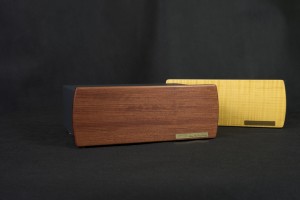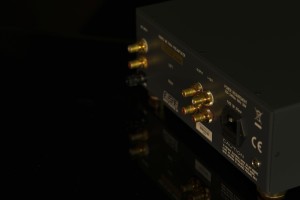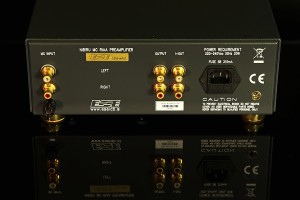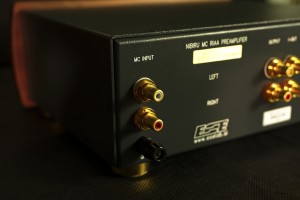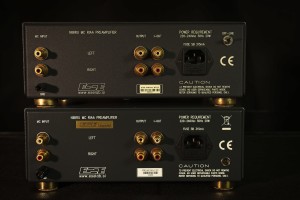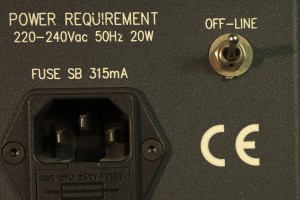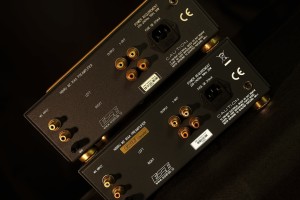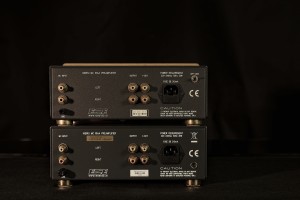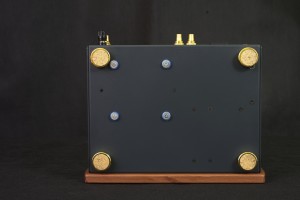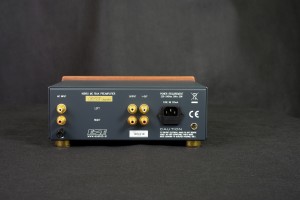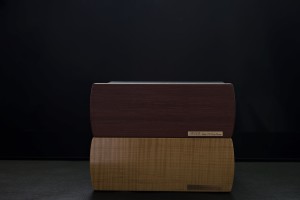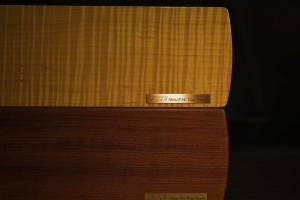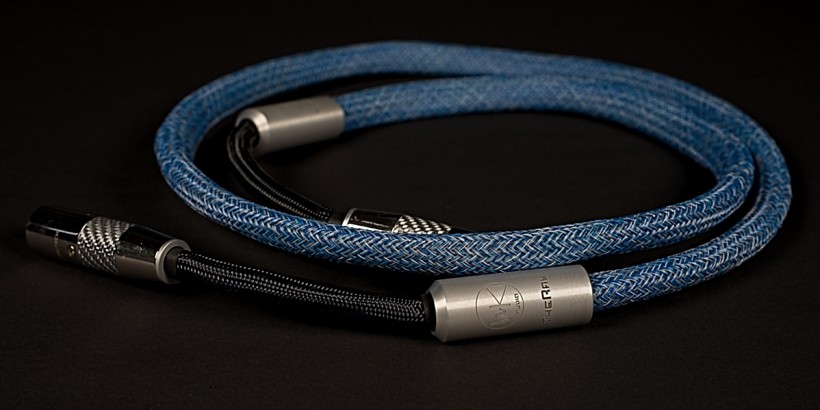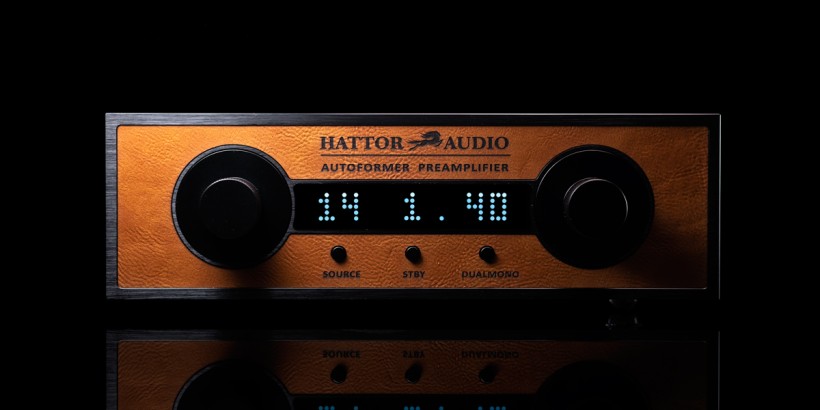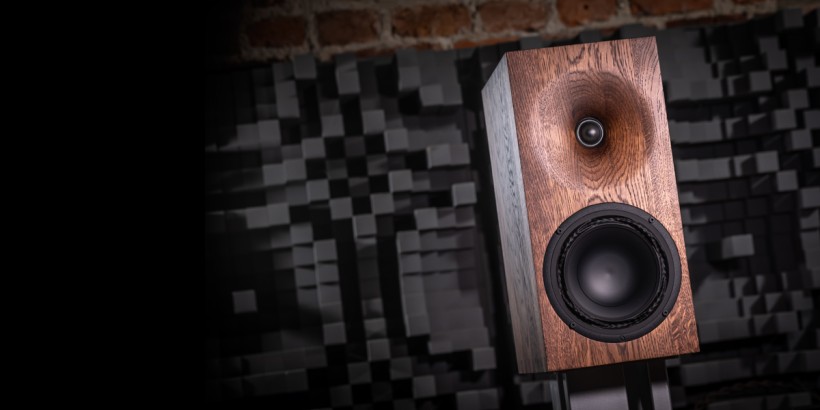There are many undiscovered audio gems waiting for those, who dare search for them instead of going with mainstream brands. One of such true diamonds comes from Slovenia. I became familiar with it already several years ago, now it’s time to re-discover it for you. Let me present to you the ESE Lab Nibiru MC phonostage.
Introduction
I’ve tried, maybe not hard enough, to find my previous correspondence with Rudi Korosec, the man behind Slovenian company ESE Lab (Esoteric Sound Equipment Lab), but I failed. I believe it was some 6-7, maybe even 8 years ago (I have quite a good memory so I remember a lot of things but I have problem with placing them in a particular moment of the past). Back then I was on a hunt for a decent MC phonostage. As always, since on the budget, instead of going with the flow and buying some popular product of the shelf of the nearest shop I went on a hunt for something of exceptionally good price/performance ratio with no so well-known logo on the front. Even though price-wise the audio world went completely mad, you can still find some products reasonably priced that offer performance that usually costs two, three, four times more. It just takes some effort. Such products are most often offered by not so well known manufacturers who, however, are able to develop and manufacture incredibly well performing audio components. And they don’t make you pay extra for a brand name. Many of them prefer direct sales which on one hand means one can’t just go to a nearby shop to listen to it or buy, but allows them to offer much more attractive pricing. While looking for candidates on-line I found a single review of the the ESE Lab Nibiru from 2004 in one of the web-based magazines (you can still find it HERE). The way the author, Geoff Husband, described its sound qualities caught my attention. That plus my intuition told me it could be something I was looking for. Truth to be told, I’ve often listened to my intuition when looking for audio products and it has never failed me (so far). I bought quite a few components based on a hunch, without having a chance to audition them – Nibiru was one of them.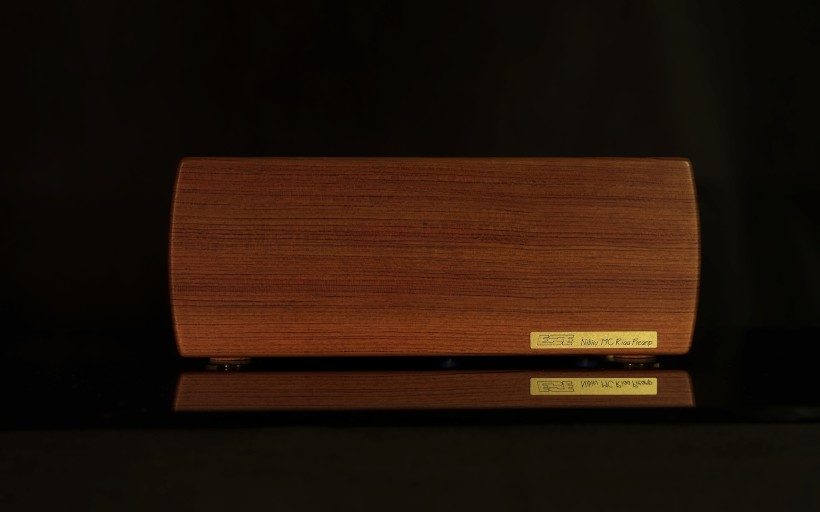 The problem was, that back then spending over 2000 Euro for a phonostage was bit too much for me. Luckily, shortly after reading the review and getting my hopes up I found one on ebay being sold by some gentleman from the UK. The owner claimed even that his was a custom unit upgraded with some higher grade components (if you check the above mentioned review you will see, that even stock version used impressive parts). I contacted Rudi and he, even knowing I wanted to buy a second hand unit still was kind enough to confirm the auctions description including the fact, it was a special version of his battery powered phonostage. Long story short, I won the auction and shortly after that I could start enjoying the amazingly good, even considering the price of a new unit, performance of the Nibiru. It became my reference device for years to come confirming it was one of the best out there a reasonable amount of money could buy. Sure I reviewed crazy expensive competitors from Audio Tekne, Ypsilon, Tenor Audio, Kondo, Brinkmann and some others and these definitely outperformed Nibiru, but at price several time higher, definitely out of my reach. So I was just lucky to find something that I could afford that offered performance good enough to serve not only form my personal listening, but also as my reference phonostage for reviewer’s job. It stayed this way even when I upgraded my setup with firstly the fantastic AirTight PC3 cartridge, and later with remarkable J.Sikora Standard Max deck with Schroeder CB tonearm.
The problem was, that back then spending over 2000 Euro for a phonostage was bit too much for me. Luckily, shortly after reading the review and getting my hopes up I found one on ebay being sold by some gentleman from the UK. The owner claimed even that his was a custom unit upgraded with some higher grade components (if you check the above mentioned review you will see, that even stock version used impressive parts). I contacted Rudi and he, even knowing I wanted to buy a second hand unit still was kind enough to confirm the auctions description including the fact, it was a special version of his battery powered phonostage. Long story short, I won the auction and shortly after that I could start enjoying the amazingly good, even considering the price of a new unit, performance of the Nibiru. It became my reference device for years to come confirming it was one of the best out there a reasonable amount of money could buy. Sure I reviewed crazy expensive competitors from Audio Tekne, Ypsilon, Tenor Audio, Kondo, Brinkmann and some others and these definitely outperformed Nibiru, but at price several time higher, definitely out of my reach. So I was just lucky to find something that I could afford that offered performance good enough to serve not only form my personal listening, but also as my reference phonostage for reviewer’s job. It stayed this way even when I upgraded my setup with firstly the fantastic AirTight PC3 cartridge, and later with remarkable J.Sikora Standard Max deck with Schroeder CB tonearm.
Then in 2016 came the GrandiNote Celio mk IV (See HERE) say 3 times more expensive than Nibiru and I finally found a device that while costing less then a car outperformed Nibiru by a margin big enough to take Slovenian device’s place in my reference system. The performance difference between these two phonostage was not huge, but on top of that Celio had an additional advantage – it allowed me to use it also with MM pickups. I don’t have any Moving Magnet cartridge but the feature comes handy for some reviews. I did keep my Nibiru though, because of its special current domain (or trans-impedance) topology that allows it to work even with lowest impedance and output signal cartridges without any problem. It seems that at some point Rudi read my GrandiNote review and decided to contact me offering a much newer, 5th generation version of the Nibiru for comparison with the older one and with Celio. I gladly accepted the offer, simply because I was curious how much better the Nibiru got two and half generations later.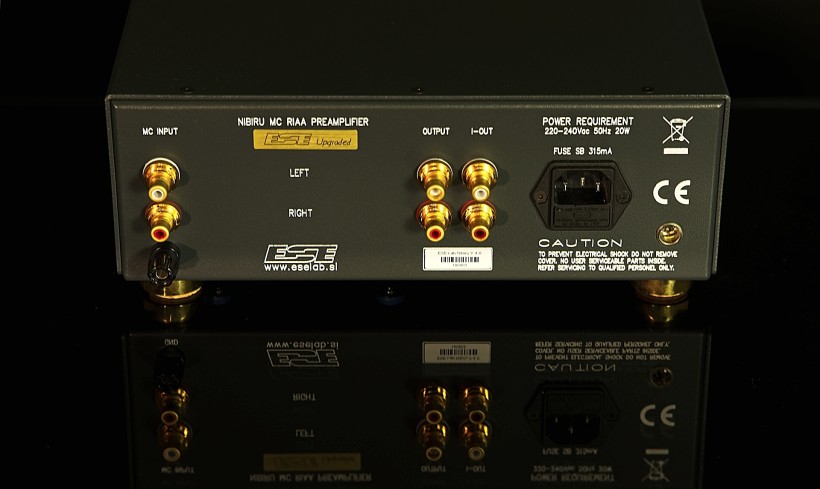 Note: You may notice on the photos I took a sticker with V 4.0 denotation – that’s just a wrong label, Rudi confirmed that I received the latest. V 5.0 for this review.
Note: You may notice on the photos I took a sticker with V 4.0 denotation – that’s just a wrong label, Rudi confirmed that I received the latest. V 5.0 for this review.
Shortly after I bought my Nibiru, marked as 2.5 generation, Rudi developed a new power supply section and… gave up using rechargeable batteries. Not only that. He claimed that the new power supply allowed Nibiru to reach a new level of performance. I had my doubts as batteries usually deliver cleaner power then power grid, hence a better performance, especially when it comes to devices with low power consumption. I remember that we exchanged some emails about it with Rudi a few years back and I considered sending my unit for upgrade because he insisted it would perform even better. After all I didn’t do it because first, I am stubborn and difficult to convince so I had my doubts about the advantage of “regular” power supply over battery one. Secondly, in the meantime I invested in new rechargeable batteries for my unit. Thirdly, I would have to ship it to Slovenia, pay for upgrade, wait for its return. It all seemed too much trouble to go through without being 100 percent sure of positive result of the upgrade (positive for me – after all I was to be listening to it almost every day). After reading the Celio review Rudi wanted to give me a chance to find out for myself, whether his new power supply solution was actually better then the one used in the older, battery-powered one. Of course he sent me the latest version, which meant some other upgrades too.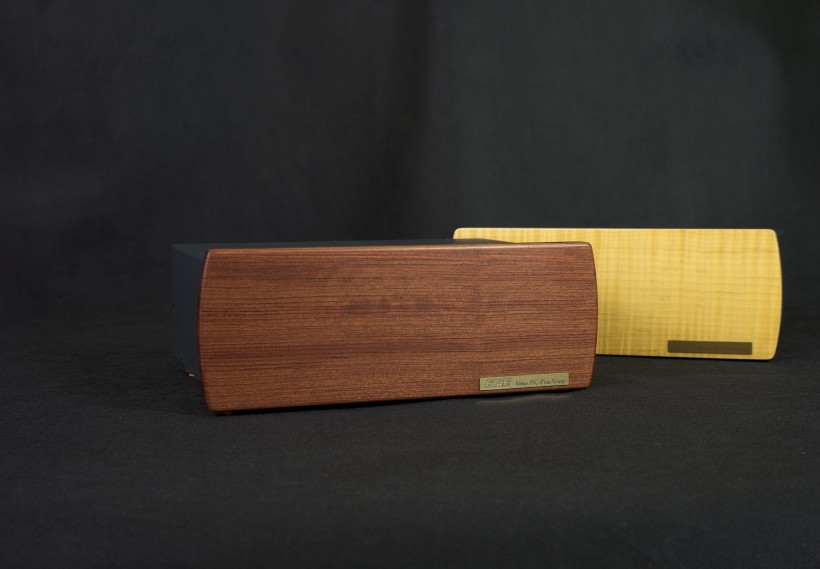
Design
The ESELabs Nibiru is a discrete design solid state current domain MC RIAA phonostage. It features a solid mid-size housing that measures roughly 280x220x105 mm (WxDxH). The front is made of a very nice wood with gently rounded side edges. Before purchase one can choose between American walnut, Brazilian rosewood or tiger wood aka Goncalo Alves. If you for some reason don’t like wood you can choose black acrilic plate instead. There is a single LED power indicator and a golden plaque with brand’s and model’s name on it. And that’s it – nothing fancy, yet quite compelling if you ask me (I simply love wood in any form). The housing itself is made of black coated aluminum and it sits on four feet with cork pads underneath them. On the solid back panel one finds three pairs of gold-plated RCA sockets. One is an input with accompanying ground pin, other two are unbalanced outputs. One of the outputs is marked as “current” one, and it is the one you should definitely use! You don’t need a current input in you preamplifier or integrated amplifier for that, just a regular one. Check for yourself, but I’m sure you will hear clear advantage of this output and won’t even think about using “standard” one. There are no switches! As explained on manufacturer’s website:
“The total lack of switches or other user dependence is purposely done for two main reasons. First there is no need to alter cartridge to preamp interface since it is a pure current domain connection and as such not dummy loading dependent and second reason is that a listener must forget the equipment and enjoy listening to music.”
The 2.5 version that I still have was battery-based. It had to be connected to power outlet in order to function (to charge batteries), but for operation it used power from batteries. I asked Rudi to explain the difference between older and newer versions and that’s what he wrote:
“The biggest change is powering the unit from mains discarding the batteries altogether. As strange as this can be the sonic outcome as well as failure rate or maintenance did improve greatly. To achieve this a top quality power supply was a must. The circuit used is lower noise than batteries and lower impedance, all this makes possible a sound outcome you are experiencing. The mentioned PS emulates batteries in a certain way so I call it “virtual battery PS” but on the other hand it has no “gray” sound flavor of the batteries. Naturally there were some further subtle upgrades concerning the power supply. The mains transformer has a special magnetic screening on it to additionally lower the noise floor. Even the grounding scheme is updated. Other major circuit improvement is at the core of the audio circuit to our proprietary current domain hybrid blocks so distortion is lowered by tenfold and bandpass also widened greatly. The proprietary current domain outputs can be used also with standard voltage equipment. The reason to use I-out is due to sound, it sounds clearly better than standard voltage output. The local supply for the current domain blocks is ultra low noise achieved by individual buffering. The last major upgrade is to RIAA circuit and its components. The caps are now the best polystyrene caps we could find, all parts are matched to tight tolerance and their L to R matching is under 0.2% in order to maintain L-R balance and consequently the sound stage as phase coherent as possible. In order to further improve sound in terms of transparency, micro dynamics and attack I made a compensation to RIAA circuit in order to follow the frequency response over 20kHz of the records better due to cutter head 50kHz low cut filters the RIAA standard is not considering.“
It’s time to tell you how the new Nibiru sounds like.
Sound
I’d like to start this part not with comparison between Nibiru’s versions or telling you how it fared against Celio. Instead let me start with some impressions from a very particular listening sessions. I spent several months with the new Nibiru and for part of it it was paired with Kondo IO-M cartridge. I received the latter for a review for another magazine paired with SFz step up transformer simply because the distributor was afraid no phonostage I had at my disposal would be able to properly work with this pickup because of its as low as 1Ω impedance and output signal of 0,12V. It’s true that there are only few phonostages that are capable of delivering top notch performance with such a cartridge. Since the Kondo IO-M wasn’t even fully broken in when I got it, I installed it in my Schroeder CB tonearm on my J.Sikora Standard MAX turntable and… connected it firstly to the new Nibiru. Both needed some break in time so I thought they could have it together. I didn’t really know what to expect of this combination despite the fact, that Nibiru always seemed to sound better with low output pickups. Yet, I don’t remember actually ever using such a low impedance cartridge with it (meaning my, older version), so I didn’t know whether ESE Lab phonostage could actually handle Kondo properly.
Oh boy, was I in for a very special treat! I had no way of knowing what a wonderful pair these two exceptional components would create. Sure, I realized that IO-M was one of the top cartridges money can buy – I listened to it several times in full (I mean, apart from the speakers) Kondo systems and it was always a magnificent experience. I also knew that Nibiru was capable of performance much better that it’s price tag would suggest. But still the huge price gap between these two components suggested that the former would not be able to present its full potential with the latter. As the IO-M combined with SFz and KSL-M7 phonostage proved later, Nibiru, while delivering remarkable performance, was not fully on pair with Kondo’s system but… But what I heard with it was way beyond anything one could expect from a device even 2-3 times more expensive.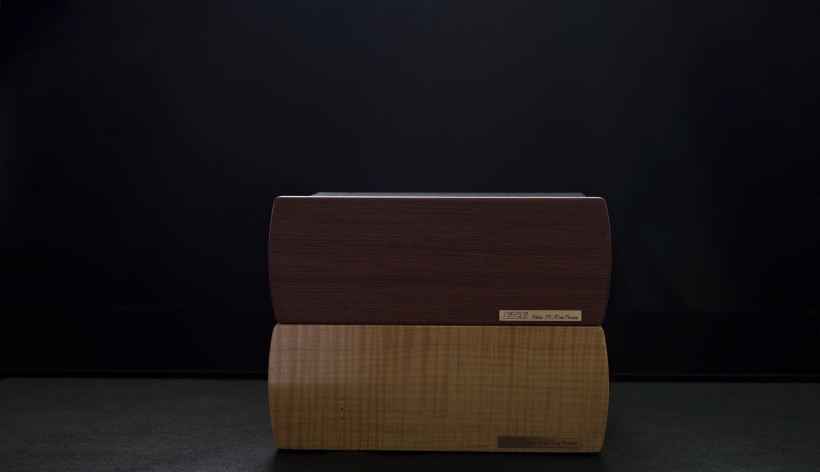 The IO-M is one of the two best cartridges I had a pleasure to review, surely on the very top of my personal list right next to the phenomenal Murasakino Sumile MC (See HERE). Both are brilliant, yet different sounding. The Kondo is the most musically involving one (yet resolving and pure sounding), while Murasakino Sumile is the most resolving, most pure sounding (and yet musically involving). The Nibiru on one hand allowed the IO-M to keep its unique musicality, smoothness and coherence, on the other made it sound bit purer, more transparent, more precise, or in other words – bit more Sumile-like. The point of course is, that Kondo has its unique set of qualities, that with above mentioned own Kondo’s phono and step up was “amplified” and displayed in the best possible, most complete, most compelling way, turning listening to it an exclusive, outstanding, breath-taking, addictive experience. The sound was incredibly rich, palpable, musicians so present and as much live-like as only possible while listening to a recording. With Nibiru the performance became more precise, better organized on stage, due to a lower background noise level (tubes always introduce some) it seemed more detailed, more transparent, but wasn’t so rich, so saturated, so present, so incredibly smooth and fluid (I mean compared to Kondo’s own set, because compared to other phonostages it actually was all of that and more). So overall Kondo’s set delivered a better, even more satisfying presentation (surely for a Kondo fan that I am) because it was designed to offer an ultimate performance with IO-M. Still, the Nibiru fell surprisingly short behind. I could easily imagine living with IO-M + Nibiru combination even for a long time until being able to afford phono + step up combination from Kondo (that is almost 10- times more expensive).
The IO-M is one of the two best cartridges I had a pleasure to review, surely on the very top of my personal list right next to the phenomenal Murasakino Sumile MC (See HERE). Both are brilliant, yet different sounding. The Kondo is the most musically involving one (yet resolving and pure sounding), while Murasakino Sumile is the most resolving, most pure sounding (and yet musically involving). The Nibiru on one hand allowed the IO-M to keep its unique musicality, smoothness and coherence, on the other made it sound bit purer, more transparent, more precise, or in other words – bit more Sumile-like. The point of course is, that Kondo has its unique set of qualities, that with above mentioned own Kondo’s phono and step up was “amplified” and displayed in the best possible, most complete, most compelling way, turning listening to it an exclusive, outstanding, breath-taking, addictive experience. The sound was incredibly rich, palpable, musicians so present and as much live-like as only possible while listening to a recording. With Nibiru the performance became more precise, better organized on stage, due to a lower background noise level (tubes always introduce some) it seemed more detailed, more transparent, but wasn’t so rich, so saturated, so present, so incredibly smooth and fluid (I mean compared to Kondo’s own set, because compared to other phonostages it actually was all of that and more). So overall Kondo’s set delivered a better, even more satisfying presentation (surely for a Kondo fan that I am) because it was designed to offer an ultimate performance with IO-M. Still, the Nibiru fell surprisingly short behind. I could easily imagine living with IO-M + Nibiru combination even for a long time until being able to afford phono + step up combination from Kondo (that is almost 10- times more expensive).
The qualities introduced by the Nibiru to a system with the Kondo IO-M affected the sound in a similar fashion when I returned to my own trusted AirTight PC-3 cartridge (installed on the same tonearm and deck). This is also one of the very best pickups I’ve ever listened to, topped only by few. Long story short – a terrific performer. The Slovenian phonostage is one of high precision, purity and transparency and yet its performance is smooth, coherent and musically involving. The absolute silence, or lack of any noise coming from the device which translates into a totally black background for music, offers a new, exciting insight even into recordings one knows very well. Let me repeat once more that the presentation with Nibiru is very coherent but also resolving, detailed and clear. Combined with black background it results in abundance of those tiny information, subtleties better doing their job. Whenever these are pronounced in a clearer, more distinct way they make music richer, more complete, more live-like, hence more enjoyable and engaging. That’s why, whatever the cartridge, I had a great time with the new version of Slovenian phono immensely enjoying every single record.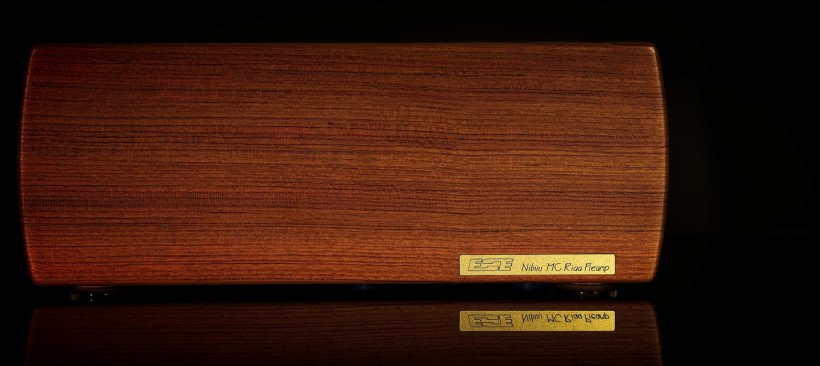 The music delivered by Nibiru MC is very nicely layered which combined with previously mentioned features allows listeners to choose what they want to focus their attention on. It might be the central figure in the foreground – leading vocal or musician, but it can as easily be an instrument playing in the second or third row. Or maybe you’d like to focus on room’s ambiance, on (in live recordings) crowd’s reactions – no problem. Nibiru, due to its precision, resolution, very good selectivity and transparency, will let you make your own choices. This particular feature, not so common even among more expensive competitors, will allow you to listen to the same record several times each time finding some new, interesting elements greatly enriching your experience. On top of that, the presentation delivered by Nibiru is very open and airy so you can “see” large space if recording offers it. As you probably noticed I haven’t really gotten into describing bass, midrange, treble and so on. Why? Simply because the Slovenian device plays music and when you listen to the music, you don’t really think about bass, treble and so on. You either enjoy the music or you don’t. You can enjoy it more while using one device and bit less while using a different one. Nibiru delivers performance that focuses attention solely on the music – that, and emotions involved, are the only things that matter. And all that while, as mentioned already so many times, the presentation is highly detailed, resolving, transparent, so you could study chosen elements easily. But I didn’t, because I didn’t care about them. They were simply… accurate, natural, there were no annoying elements, nothing that would distract my attention from music. That’s exactly how I like my music played.
The music delivered by Nibiru MC is very nicely layered which combined with previously mentioned features allows listeners to choose what they want to focus their attention on. It might be the central figure in the foreground – leading vocal or musician, but it can as easily be an instrument playing in the second or third row. Or maybe you’d like to focus on room’s ambiance, on (in live recordings) crowd’s reactions – no problem. Nibiru, due to its precision, resolution, very good selectivity and transparency, will let you make your own choices. This particular feature, not so common even among more expensive competitors, will allow you to listen to the same record several times each time finding some new, interesting elements greatly enriching your experience. On top of that, the presentation delivered by Nibiru is very open and airy so you can “see” large space if recording offers it. As you probably noticed I haven’t really gotten into describing bass, midrange, treble and so on. Why? Simply because the Slovenian device plays music and when you listen to the music, you don’t really think about bass, treble and so on. You either enjoy the music or you don’t. You can enjoy it more while using one device and bit less while using a different one. Nibiru delivers performance that focuses attention solely on the music – that, and emotions involved, are the only things that matter. And all that while, as mentioned already so many times, the presentation is highly detailed, resolving, transparent, so you could study chosen elements easily. But I didn’t, because I didn’t care about them. They were simply… accurate, natural, there were no annoying elements, nothing that would distract my attention from music. That’s exactly how I like my music played.
I owe you at least a short assessment of how did the V 5.0 fare against my older version? I have to give it to Rudi – what he told me about the new PS being better than battery-based one is true. Not that difference is overwhelming – I wouldn’t go that far, but it does justify ESE Lab offering new version to its customers or for the owners of older versions an option to send their units for upgrade. The overall character is similar but the v. 5.0 does most things even better. It’s more focused and precise, the dynamics in both, macro and micro scale is more impressive, it has more punch, but not only that – bass is better defined and differentiated. The sound overall seems more lively, more agile which is what one would expect from a regular PS vs battery based one. But the latter would usually be more quiet, with less noise resulting in richer, better differentiated, more refined presentations. Usually… but not this time. Yes, the PS in the latest version is the more quiet one so actually I can’t point out any advantages of the older, battery-powered version over the latest one. I really hoped I would find at least some, but I failed. As the result, I think I can tell you that already, I will be sending my unit for an upgrade.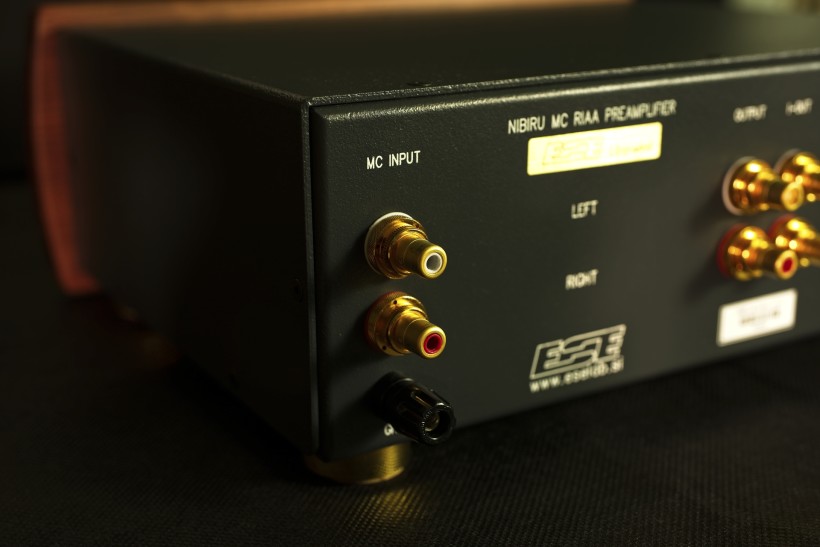 What about comparison against my present reference, GrandiNote Celio? The Italian phonostage was superior in some aspect over my Nibiru 2.5. It was able to retrieve more of even smallest, tiniest details of high quality recordings due to a higher resolution and better differentiation. The sound was richer, more saturated and more spacial. The new version of Slovenian phono closed the gap in these respects. These two devices are now much closer in terms of performance and yet they sound different. As ridiculous as it sounds, considering that both are solid-state devices, GrandiNote sounds more “tube-like” with its richer, slightly warmer sound. Nibiru’s tonal balance is more neutral, its bass has a bit less slam but it is better defined and thus better differentiated. I’d say that when compared head-to-head I preferred Nibiru mostly when playing electric recordings and Celio with acoustic ones. You have to consider though, that I am a tube aficionado and the latter sounds more tube-like, hence the preference that could differ for someone with different expectations. There was a bit more wood in, for example, double bass or guitar with GrandiNote, faster and better differentiated notes of an electric bass guitar sounded more to my taste with ESE Lab. With classical music the Italian device gave orchestra more weight, more power, but the Slovenian one gave me better insight into layers of such music, allowed me to more precisely follow a chosen instrument or a group of instruments. The soloists were more palpable, more three-dimensional with Celio, but again Nibiru gave me a better insight into what was going on behind them.
What about comparison against my present reference, GrandiNote Celio? The Italian phonostage was superior in some aspect over my Nibiru 2.5. It was able to retrieve more of even smallest, tiniest details of high quality recordings due to a higher resolution and better differentiation. The sound was richer, more saturated and more spacial. The new version of Slovenian phono closed the gap in these respects. These two devices are now much closer in terms of performance and yet they sound different. As ridiculous as it sounds, considering that both are solid-state devices, GrandiNote sounds more “tube-like” with its richer, slightly warmer sound. Nibiru’s tonal balance is more neutral, its bass has a bit less slam but it is better defined and thus better differentiated. I’d say that when compared head-to-head I preferred Nibiru mostly when playing electric recordings and Celio with acoustic ones. You have to consider though, that I am a tube aficionado and the latter sounds more tube-like, hence the preference that could differ for someone with different expectations. There was a bit more wood in, for example, double bass or guitar with GrandiNote, faster and better differentiated notes of an electric bass guitar sounded more to my taste with ESE Lab. With classical music the Italian device gave orchestra more weight, more power, but the Slovenian one gave me better insight into layers of such music, allowed me to more precisely follow a chosen instrument or a group of instruments. The soloists were more palpable, more three-dimensional with Celio, but again Nibiru gave me a better insight into what was going on behind them.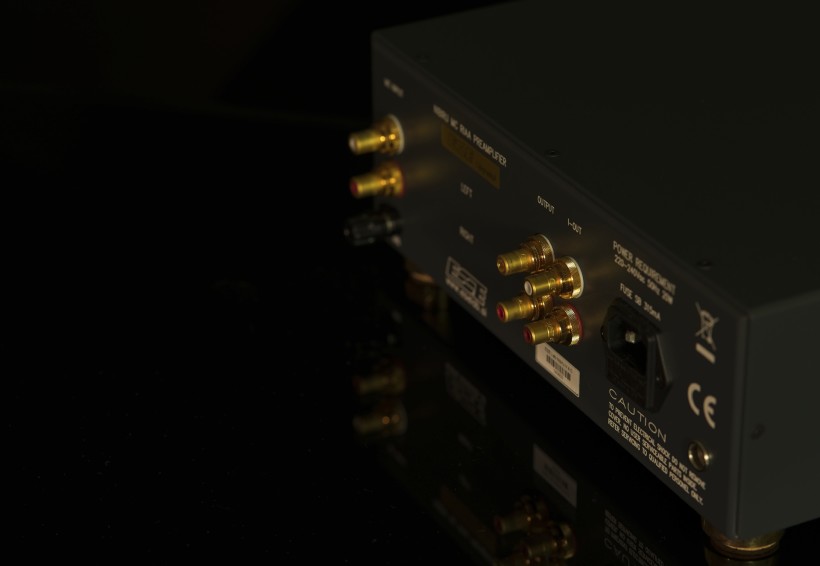 All in all, both phonostages are fantastic, high end components. Each of them will appeal to a bit different music lovers though. The Nibiru will fully satisfy those, who need to delve into recording, clearly hear every detail, easily dive into the depths of the stage to find out how the guy in the back is doing. Celio sounds more like tube-based phonostages with its slightly warmer, bit more lavish, very present sound. A practical advantage of ESELabs is its ability to work with even so low impedance and low signal cartridges as Kondo IO-M. The Celio on the other hand will work well with most MC, HOMC and MM pickups which makes it more versatile. I’d say that despite significant price difference (bit over 2 kEUR Nibiru vs 6kEUR Celio) they offer the same level of performance. So price-wise the Slovenian product is a smarter choice. But as we all know price is only one of factors most of us consider. The very important one, I’d say the key one, should be the sound. The level of performance is one thing – obviously the higher the better – but it also has to meet our personal preferences and expectations in the best possible way. Plus there is the versatility factor. When making a decision one has to factor all these elements in and make the best choice for themselves. In this case you simply can’t go wrong with either of these amazing phonostages. That’s why I shall upgrade my Nibiru to V5.0 and keep both devices.
All in all, both phonostages are fantastic, high end components. Each of them will appeal to a bit different music lovers though. The Nibiru will fully satisfy those, who need to delve into recording, clearly hear every detail, easily dive into the depths of the stage to find out how the guy in the back is doing. Celio sounds more like tube-based phonostages with its slightly warmer, bit more lavish, very present sound. A practical advantage of ESELabs is its ability to work with even so low impedance and low signal cartridges as Kondo IO-M. The Celio on the other hand will work well with most MC, HOMC and MM pickups which makes it more versatile. I’d say that despite significant price difference (bit over 2 kEUR Nibiru vs 6kEUR Celio) they offer the same level of performance. So price-wise the Slovenian product is a smarter choice. But as we all know price is only one of factors most of us consider. The very important one, I’d say the key one, should be the sound. The level of performance is one thing – obviously the higher the better – but it also has to meet our personal preferences and expectations in the best possible way. Plus there is the versatility factor. When making a decision one has to factor all these elements in and make the best choice for themselves. In this case you simply can’t go wrong with either of these amazing phonostages. That’s why I shall upgrade my Nibiru to V5.0 and keep both devices.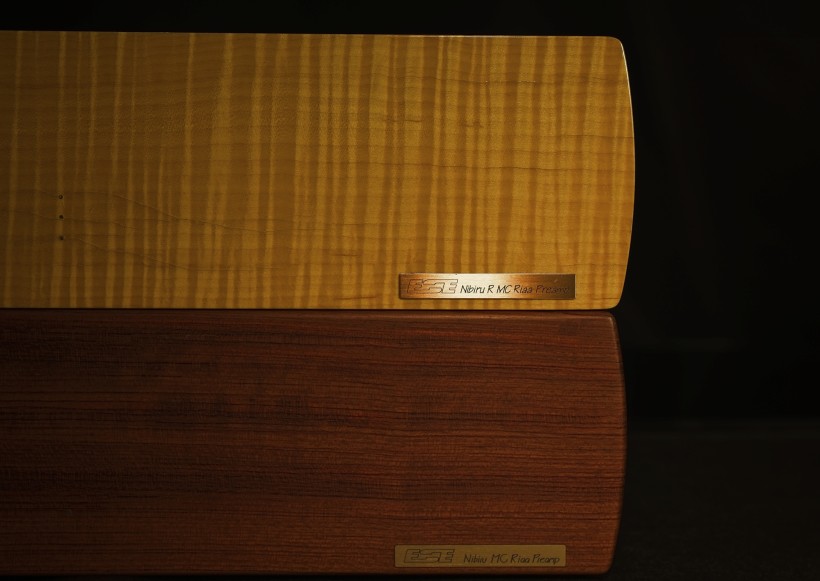
Summary
I started the review telling you that sometimes it’s worth to search for hidden audio gems instead of buying mainstream products. The ESE Lab Nibiru V 5.0 is maybe the best proof of my claim (that I know). It will cost you bit over 2k EUR and perform on pair with other phonostages 2, 3, 4-times more expensive. Due to its design it does work particularly well with low output, low impedance MC cartridges, that usually cost much more then Nibiru itself. With them it will deliver a highly resolving, detailed, coherent, open, smooth and musically involving presentation. One that may allow you to forget that you’re listening to a system and simply enjoy the music. Small, elegant, no switches or knobs – just connect your turntable and get lost in a world of a beautiful music.
Technical specification (according to manufacturer):
- INPUT: current sink, fine trimmed for zero offset
- INPUT IMPEDANCE: 3 Ω
- MIN. INPUT LEVEL: it can handle the lowest output cartridge in existence
- MAX. GAIN: 70dB, cartridge dependent
- FREQUENCY RESPONSE: 0/-1dB, 10Hz-100.000Hz
- OUTPUT: pure class A, 100 Ω output impedance
- OUTPUT LOAD: 600 Ω or greater
- MAX. OUTPUT LEVEL: +20dBm/600 Ω (7.8V rms)
- I-OUT: current domain output terminated with 1,6K, can be used with voltage equipment also
- MAX. NOISE & HUM: -85dBm, A weighted
- SIGNAL/NOISE RATIO: 105dB
Price (when reviewed):
- ESE Lab Nibiru: 2.196 EUR (1.800 EUR excl. VAT)
Manufacturer: Esoteric Sound Equipment Lab
Associated equipment:
- Analogue front end: J.Sikora Basic MAX turntable, Schroeder CB tonearm , AirTight PC-3 and Kondo IO-M catridges, phonostages: Grandinote Celio mk IV, ESE Lab Nibiru V 2.5
- Power amplifier: Modwright KWA100 SE, GrandiNote Shinai integrated
- Preamplifier: Audia Flight FLS1
- Loudspeakers: Ubiq Audio Model ONE Duelund Edition. GrandiNote MACH4
- Interconnects: Hijiri Million (RCA), Less Loss Anchorwave (RCA), KBL Sound Red Eye Ultimate Phono
- Speaker cables: LessLoss Anchorwave
- Power cables: LessLoss DFPC Signature, Gigawatt LC-3
- Power: Gigawatt PF-2 MK2 and ISOL-8 Substation Integra; a dedicated power line with Gigawatt LC-Y in-wall cable; Gigawatt G-044 Schuko and Furutech FT-SWS-D (R)
- Racks: Base VI, Rogoz Audio 3RP3/BBS
- Anti-vibration accessories: ROGOZ-AUDIO SMO40 and CPPB16 platforms and ROGOZ AUDIO BW40MKII feet, Franc Accessories Ceramic Disc Slim Feet and Wood Block Platform


